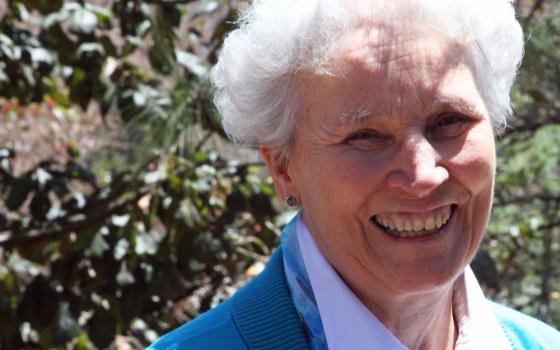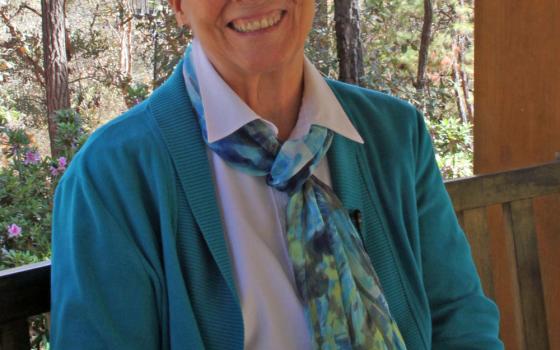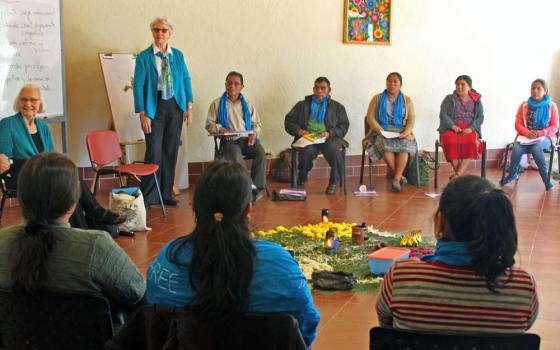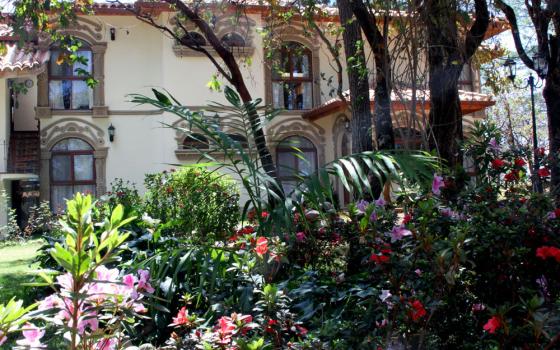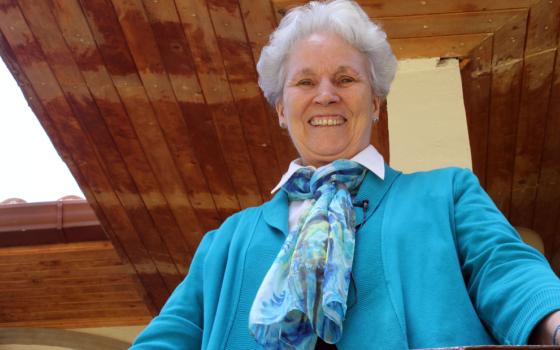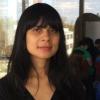The road through Santa Cruz del Quiché is hectic, with tuk-tuks, buses, motorcycles and people carrying heavy loads of produce and wood on their backs through the narrow asphalt road lined with high embankments and yawning stray dogs.
It's the front door to the highlands of Guatemala, about four hours west of the capital, and to find the road north to San Pedro Jocopilas, I stop to ask locals for directions on street corners. I watch how their hands point, then I meander out of town and make a sloppy left onto a cobblestone road when I see the sign: Centro de Paz Bárbara Ford.
The road is quiet, lined with open fields with harvested corn, small adobe houses and colorful laundry drying in the sun. Not too long ago, the 36 years of civil war between the state forces and the guerrillas separated families and took lives here.
The civil war began after the United States financially backed a military coup in 1954 that overthrew leftist Jacobo Arbenz Guzmán.
One of the most violent periods of this era was General Efraín Ríos Montt's 18-month presidency, which began in 1982 after a military coup, and resulted in about 200,000 dead, mostly indigenous people. There were death squads, executions, forced disappearances and torture of noncombatants.
Most of the human rights violations occurred under Ríos Montt's destroy-all-opponents policy called "scorched earth." By the time the Peace Accords were signed Dec. 29, 1996, thousands had been killed or disappeared, families separated and the social fabric torn apart.
At the end of the cobblestone road is the Barbara Ford Peace Center, which sits on a serene, wooded property and houses a conference center, eco-park, sustainable farm with goats and rabbits, a professional cafeteria, honey production, and various entrepreneurial projects mainly run by young people. I have come to meet with Sr. Virginia Searing, a Sister of Charity of New York and the center's director who months after her 75th birthday reflected on her two decades of work in Guatemala and at the center, a nonprofit she co-founded that focuses on human and spiritual development through different programs.
When Searing arrived in the 1990s, she, Sr. Barbara Ford and a team of health promoters noticed the people they were helping still had nightmares and psychosomatic illnesses that were not talked about.
"We could walk down a street in Quiché, and literally, it was ex-army, ex-guerillas, and it wasn't safe here," Searing said. "So people were still very afraid. Nobody talked to anybody until we started our mental health program."
GSR: What was your spiritual upbringing, and how does it relate to the work that you do now?
Searing: I never considered myself as someone who would become a Sister of Charity. As a matter of fact, I got the call from a sister who was putting a little pressure on me, and my first reaction was: "No way!"
I couldn't imagine I would be a sister. I always was in trouble in school. I used to always give the sister a hard time. I entered the Sisters of Charity in 1960, and I said, "Well, let me go, and if I don't like it, I will get out." But I have to tell you that from day one, Sept. 8, 1960, when I went to Mount Saint Vincent to this beautiful novitiate house on the Hudson River [in New York], I never looked back. I couldn't imagine that I was going to love it so much.
How do you see the Holy Spirit in the work that you are doing with the Barbara Ford Peace Center?
Any service, any teaching, anything that we do to create life among us is a part of my spirituality.
It is a question of living life so it becomes fully developed because community life was key for me. With the sisters and their intentional community, we learned to love one another and believe that in loving one another is how we were growing in our own spirituality.
Coming to Guatemala in 1993 and meeting these wonderful people taught me that they have an incredible spirituality. The Maya spirituality and also Mayans who were converted to be Christians because of the Spanish invasion, their beautiful Mayan spirituality just radiated right through them. When they talked about the heart of the Earth and the heart of the heavens — they believe in a god that is tangible, present and, of course, growing with them and learning with them and sharing with them — I grew deeper in my own spirituality.
My spirituality has always been about finding God in the present moment, living that present moment. Even if I met somebody and I had some kind of problem with somebody, I consider that a call for me to change that into blessing, to change that into the ability to be one.
Could you describe what is unique about what you and the other sisters who helped create this are doing at the Barbara Ford Peace Center?
I believe that being fully human is being fully spiritual. The mission is to create citizens — men, women, young people, boys and girls — to be critical, to be able to be in a process of integrated human spiritual development. They do that at their own level, the level of their family, the level of the community, and by doing that, they are allowing themselves and their communities to live in peace and in justice.
We have programs for what we call comprehensive health or integrated health. We also have human rights, and all of our programs do the same thing. For example, in the integrated health program, we work with teenage pregnant women, girls who were abused, violated, and young girls who did not become pregnant but were also violated. Sexual abuse is at the highest level, incest is epidemic, so how does one sit down next to a young girl that has been raped every day or a woman that has been raped every day and came out of the violence, and how do we do that in a way that is not obtrusive?
I do believe that in many of the practices we do, we are allowing them very gracefully and very slowly to begin to tell their story. We allow them to listen to music, to walk the music. We allow them to do painting. We do a lot of alternative types of education, all with the idea that they are slowly, gradually beginning to tell their story and to let the silent within them come out, and as it does, they begin to believe [in] the actions they are doing. There is a breathing exercise, whether it is saying words like, "I love myself, I trust myself, I feel like getting healed" — whatever the practice that they are doing, it is helping them to really believe that healing is taking place.
In El Quiché, it was a genocide. Every man, woman and children are now in the second and third generation, but we still work with midwives, with women working with other women, and without a doubt, all of them probably were raped, some by the soldiers, others by their own husbands after the violence was over, because many men who came out of being a soldier were being civil patrol or being part of the guerrillas even, so they never had a healing process to get [through] that anger and terrible experience of the war. So violence is still pretty prevalent within the home. So how do we allow these men and women to be able to get in touch with that finally?
How do we get them so they can learn how to relate to others in a nonviolent way? We have programs [for teenagers] that incorporate not just the opportunities per employment, but we have a lot of the integrated health so they learn how to deal with their emotions.
They do practices to actually have alternative ways [to manage their emotions]. They can use massage, they can use acupressure points: So much of it has scientific, biological background that just by doing some of these practices, healing takes place. Even if the situation of violence doesn't change, so many of the young women have learned that maybe they can't change their situation right now, but when I do have the circumstances I can protect myself, and I can't allow the violence outside to come inside.
What have been some of the challenges for you in working with this region and the work that you are doing? What challenges contributed to the center?
The challenge for me was with all the exhumations [in search of victims of Ríos Montt's "scorched earth" policy to give them a proper burial], with the sleeping out in the mountains of Nebaj and some of those areas where we did the exhumations of clandestine graves. Strange as it may seem, these were some of the happiest years of my life because I was able to really be with the people, exhume the bodies of their loved ones and accompany them not only in that moment. With the mental health program, we sometimes went once or twice a month and listened to their stories, to their pain, and experienced how they cried and shouted out what happened to them, and then accompanied them and helped them find their loved ones in a clandestine grave.
This was out in the woods. They didn't bury those people in their village, they buried them in the mountains — and that is where we went, that is how we spent weeks until we could finish the process. We were helping them with their mental health.
What is one thing that you have learned in your time in Guatemala and the work that you have done that you wish you had known when you started this work?
The truth that I would want every human being to know is, how do we accompany that young person, that young girl, that young boy, so that they can love themselves more, they can respect themselves more? The young girl who doesn't understand what her sexuality is, how could we help that young girl to say no, to love her mind and to love her spirit?
How do we make people who come to the Barbara Ford Peace Center, whether they stay for a year or two years, feel their lives are changed, that they are transformed and that what we did is, we helped them to be transformed themselves? If we give them the right words and the right experiences, they can truly live the rest of their lives in a way that is more peaceful, more full of justice — lives that are full of dignity, which is what every human being deserves.
[Kara Andrade is a Guatemalan-American researcher, journalist and entrepreneur who focuses on Latin America, media, technology and society.]
